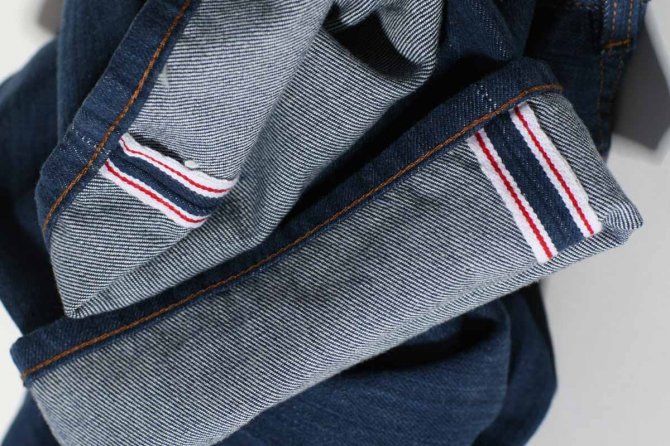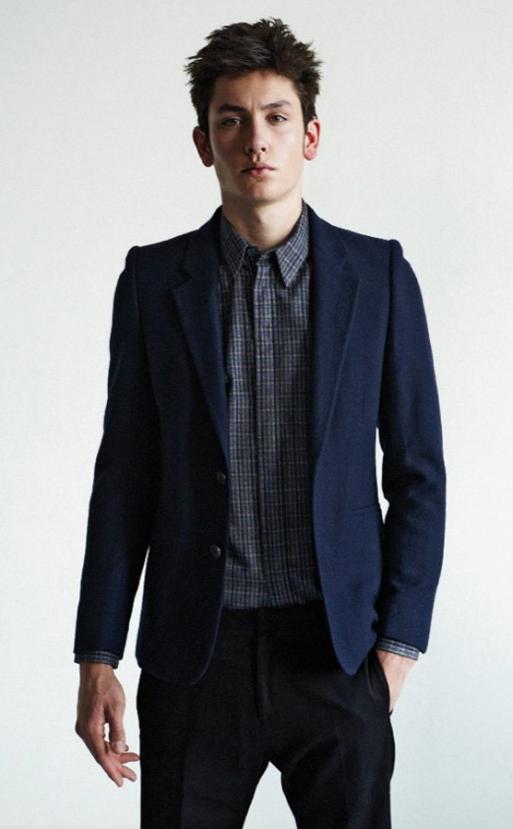Disclaimer: Although this is nothing new, Kinowear has always advised against wearing black, arguably an overestimated color. Yet, faced with constant demands surrounding this topic, and the number of you tempted by black jeans, here is our advice on how to choose it well 😉
A lot of people think that black jean is the new denim. I can’t 100% agree with this, however I must admit that there’s some truth to that. Black jeans are most definitely becoming a vital piece of a man’s closet, because it puts together an interesting alternative to indigo or grey, for those of us who have already mastered the basics.
Why wear black jeans?
In relation to raw indigo jeans, an outfit seems a little more dressed up, carrying a graphic and modern effect (the legs appear to be better structured at the core of the silhouette), as well as a rock effect that the whole world recognises. Like the blue jean, it ages really well when you consider the price (when you pay the price), developing a nice grey patined effect over time (for info, grey jeans are just black canvases that you have washed until you achieve the effect you want. On the other hand, it’s for this reason that grey jeans are often a bit more expensive than “truly” raw jeans.
In this guide, I’m going to open up to you my selection which will be divided into three parts, according to price range. But before, we’ll quickly look at the main criterion to take into account when you come to choosing black jeans.
The fabric
We must firstly remember that dark jeans don’t fade in the same way that indigo jeans do. The colorants used for the majority of black jeans are chemicals and resist when washed, even though indigo is a natural pigment that doesn’t completely stick to the fibers of the fabric, and thus gives you that nicely faded effect that you obtain on your blue jeans.
The “coated” effect also exists, i.e. when you apply a dark primer that sticks to the fibres well and gives a rubbery effect, sometimes matt, sometimes shiny.
Some brands produce stretchy fabric (often with 2% elastic) for a better sense of comfort and a better-fitted figure. It’s the easier version of leather trousers (and much more wearable, although I have seen leather trousers really well worn on men, yet maybe not like in La Cage aux Folles).

“Slim Jim black coated” jeans by Nudie, with an interesting affect on the canvas due to black toner.
With this being said, there are black jeans tinted in a natural way, with pigments loosely attached, to obtain a faded effect that is more on the grey side. This is typically the case for high-end black jeans (like those that you could find at Renhsen). It’s almost always the case for selvedge black canvases. If you want jeans that will last, I advise you to invest in selvedge denim with the correct thickness (12oz or more).
Manufacturing black jeans
This is important, as it determines the way in which denim will develop its patined effect. If it’s been washed previously, the jeans won’t have the same potential to fade compared with a pair that hasn’t been washed.
You roughly distinguish three main production methods for black jeans:
- The dye on the piece – weave the fabric with untreated threads in tanks.
- The dye on the thread, which consists of soaking only the thread in a boiling vat containing black coloring, then drying it out, to then repeat the process multiple times until the effect is achieved (we call this method overdying). Of course, the more times it is bathed, the more expensive the jeans will be, but the fading will only be subtle because the pigment will have penetrated the core of the fiber. When it is bathed multiple times, we call this deep core dying. In brief, over-dying is the most common method amongst brands.
 The black “stripes” correspond to the warp of the fabric that has been colored, the white ones as wefted
The black “stripes” correspond to the warp of the fabric that has been colored, the white ones as wefted
- The last method, often called black-black, consists, as the name suggests, of weaving the denim in using directly a black warp and a black weft. This gives a perfectly black appearance, not contrasting the canvas. It’s a more costly technique, as you also dye the weft this time (a double dye on the threat, if it is needed).
 Here is a good example of a canvas showing the black-black method, notice how intense the colour is.
Here is a good example of a canvas showing the black-black method, notice how intense the colour is.
I have specifically chosen not to talk about selvedge shadows here (indigo chain / white thread), for only talking about black jeans in a literal sense.
The selection of black jeans for men
At small prices
We’ll kick off with readily available jeans at traditional brands, such as Zara, H&M and Uniqlo. Their black jeans could work well for you if you are familiar with their sizes and your budget is limited. These from Uniqlo are my favorites in this price range.
 Black jeans from Uniqlo, a good price/quality relationship and a really good cut.
Black jeans from Uniqlo, a good price/quality relationship and a really good cut.
Cheap Monday, an originally Scandinavian brand has established itself as a great brand in the landscape of low price denim. For a price fluctuating between $68 and $80 (reaching even the $40 range in the sales), you have a jean with a good quality/price relationship. They’ve done it in many black canvases, with different effects that aren’t bad. I’ve attracted on the other hand your attention to the cuts, being able to be very well fitted!
 Black jeans by Cheap Monday, notice the same fit around the legs.
Black jeans by Cheap Monday, notice the same fit around the legs.
The emblematic denim brands
Always in relatively accessible price ranges, we can rely on Levi’s, Lees and Wrangler that, even if they aren’t considered as high-end, still have safe values in terms of style.
Good investments
We find ourselves here between luxury products, with brands quite easy to find, but don’t completely satisfy denim perfectionists.
Acne is a brand well known for their quality jeans, which generally speaking fade really nicely. Their fading “Cash” is on the other hand an essential, which always comes back season after season in different cuts. The stretchy fabric has been tinted and has a distinct feature, which fades with time.
This season, APC have also produced their version of the black jean. Stretchy and made from Japanese denim, it fits well for spring as it has been washed. It won’t fade in the same way compared to a non-washed pair but it does carry a more pristine appearance.
Edwin also produces impeccable jeans at a low cost, using the black-black method since its conception.
 Edwin ED 80, using the “black-black” method. You can see at the level of the hemline that the opposite side is completely black.
Edwin ED 80, using the “black-black” method. You can see at the level of the hemline that the opposite side is completely black.
Black jeans in Japanese denim
This section is written especially to you denimheads out there, but also to the amateurs of selvedge jeans that are now ready to invest in quality.
220x de 3sixteen range
Left Field NYC Collect Mills Black Maria
Rogue Territory Stealth
These three brands are equal in terms of quality, however the differences exist in the cut, the origin of the denim and the small details. They use the black-black method and tinted seams with sulfur, which allows the jean to retain an intense and matted black effect, and afterwards to develop a sense of wear and tear in a grey patine (see the photos of the Left Field Black Maria below).
Although the essential player that is the raw jean is far from being ousted, black jeans has at the same time taken its place in a man’s closet. The ideas that are communicated, such as the effects that you can carry to the canvas, allows it to be integrated into a range of looks and to be experimented with different styles.
If by the end you want to know how to wear black, this article is made for you!








Very few people do! Thanks again for reading.
Black jeans are a must in any closet! I love how you can style them up or down, which would create a new and unique look every time! Thanks for sharing!